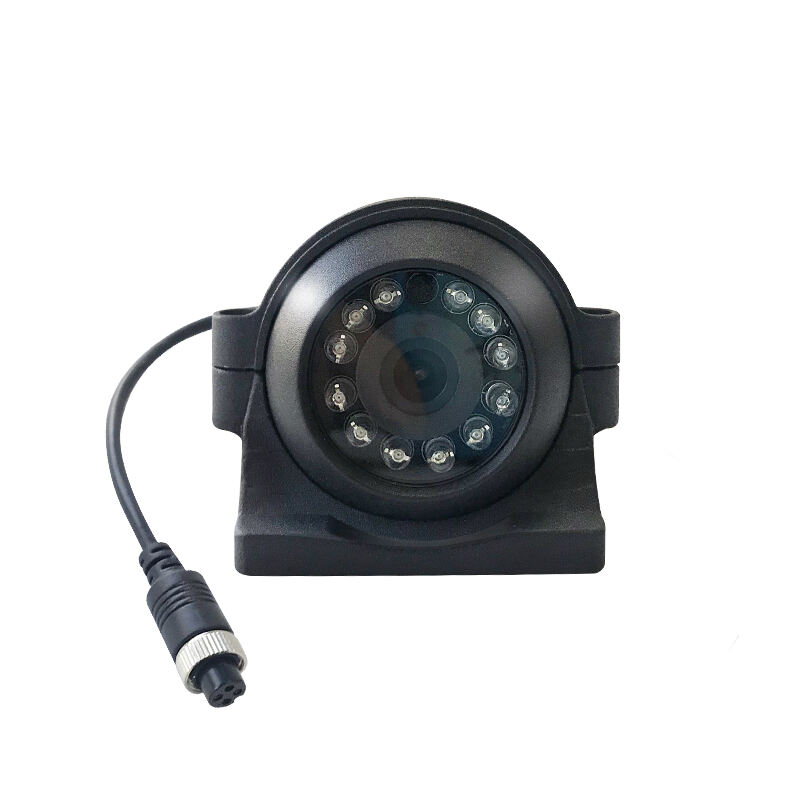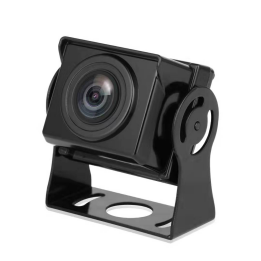Nagpapaliwanag sa Proseso ng Pag-setup para sa Kaligtasan sa Sasakyan
Pag-install ng bakulpo kamera sa iyong sasakyan ay isa sa mga pinakamabisang paraan upang mapahusay ang kaligtasan, mapabuti ang visibility, at gawing mas maginhawa ang pang-araw-araw na pagmamaneho. Kung bihasa ka man o baguhan sa pagmamaneho, ang pagdaragdag ng backup camera ay maaaring makabuluhang bawasan ang panganib ng aksidente at mga pagkakamali sa pagparada. Dahil sa mga pag-unlad sa teknolohiya, ang pag-install ng backup camera ay ngayon mas madali kaysa dati. Ito ay gabay na nagbibigay ng komprehensibong balitaan tungkol sa mga hakbang, kagamitan, at pinakamahuhusay na kasanayan para sa pag-install ng backup camera sa iyong sasakyan.
Handa na para sa Pag-install
Paano Pumili ng Tamang Backup Camera
Ang pagpili ng naaangkop bakulpo kamera ay unang hakbang. May iba't ibang uri ng backup camera na available, kabilang ang wireless models, license plate-mounted cameras, at rear-view mirror-integrated options. Ang iyong pagpili ay dapat nakabatay sa modelo ng iyong kotse, compatibility ng display system, at iyong personal na kagustuhan. Ang ilang backup cameras ay nag-aalok ng night vision, wide-angle views, at parking guidelines para sa karagdagang kaginhawaan.
Paggiging ng Kinakailangang mga Gamit at Kagamitan
Bago magsimula, tiyaking mayroon kang lahat ng mga kagamitang kinakailangan para sa installation. Maaaring kabilang dito ang power drill, screwdrivers, wire strippers, electrical tape, zip ties, at voltage tester. Bukod dito, suriin ang instruction manual na kasama ng iyong backup camera upang maunawaan ang tiyak na kinakailangan para sa iyong modelo.
Pag-unawa sa Mga Bahagi ng Sistema
Yunit ng Kamera at Display Monitor
Ang yunit ng backup camera ay karaniwang nakakabit sa likuran ng sasakyan, malapit sa lugar ng license plate. Ang display monitor ay maaaring isama sa dashboard, rearview mirror, o gumagana sa pamamagitan ng iyong smartphone sa pamamagitan ng wireless na koneksyon. Ang pag-unawa sa layout at integration points ay magpapabilis sa proseso ng pag-install.
Power Supply at Wiring Harness
Karamihan sa mga backup camera ay nangangailangan ng koneksyon sa reverse light circuit upang ang camera ay magsimula kapag ang sasakyan ay nasa reverse. Ang ilang mga sistema ay gumagamit ng dedikadong power source, habang ang iba ay kumuha ng kuryente mula sa umiiral na wiring ng sasakyan. Ang tumpak na wiring ay nagsisiguro ng pare-pareho ang suplay ng kuryente at pagpapadala ng imahe.

Pag-install ng Camera Hardware
Pag-mount ng Camera
Magsimula sa pagdesisyon ng mainam na posisyon para sa pag-iipon ng kamera. Ang karaniwang lokasyon ay nasa itaas lamang ng plaka ng lisensya, yamang nagbibigay ito ng isang sentralisadong, walang balak na tanawin. I-mark ang mga butas ng pag-iipon at gumamit ng isang drill upang ma-secure ang bracket ng camera. Tiyaking malinis at maayos ang anggulo ng lente ng kamera para sa pinakamabisyang pagtingin.
Paglalagay ng mga Kabel
Susunod, ilagay ang mga cable ng video at kuryente sa loob ng trunk o tailgate. Gamitin ang mga may-ari na mga grommets o mag-drill ng isang maliit na butas kung kinakailangan. Itigil ang mga cable sa kahabaan ng panloob na paneling gamit ang mga zip ties, tinitiyak na nakatago at protektado ito mula sa kahalumigmigan o matitibok na gilid. Iwasan ang paglalagay ng mga kahilingan malapit sa mainit na mga bahagi ng makina o mga mekanismo na gumagalaw.
Pagkonekta sa Pinagmulan ng Kuryente
Pag-tap sa Reverse Light Circuit
Karamihan sa mga backup camera ay dinisenyo upang mag-andar kapag ang kotse ay nasa likod. Kilalanin ang mga wire ng reverse light sa iyong backlight assembly gamit ang isang voltage tester. Ikonekta ang cable ng kuryente ng camera sa sirkuit na ito gamit ang mga wire tap o konektor. Subukan ang koneksyon bago tapusin ang pag-wiring.
Pagkonekta sa Display Unit
Depende sa modelo, ang display monitor ay maaaring mapagkalooban ng kuryente sa pamamagitan ng sasakyan fuse box, sigarilyo lighter, o diretso na kawad sa electrical system. Ikonekta ang video cable mula sa camera patungo sa monitor, at tiyaking secure ang lahat ng konektor. Subukan ang monitor upang kumpirmahin na ito ay nag-aaactivate kapag inilipat ang kotse sa reverse.
Huling Pag-aayos at Pagsusulit
Pag-aayos ng Anggulo ng Camera
Kapag ang sistema ay may kuryente na at gumagana, iayos ang anggulo ng camera upang makakuha ng pinakamahusay na view ng lugar sa likod ng sasakyan. Karamihan sa backup camera ay may kakayahang bahagyang ma-tilt upang makamit ang optimal na coverage. Gamitin ang test runs upang suriin ang mga blind spot at tiyaking level at walang sagabal ang imahe.
Pagsusulit sa Performance ng Sistema
Ganap na subukan ang backup camera system sa iba't ibang kondisyon ng ilaw at sitwasyon. Suriin ang klarong kalidad ng imahe, walang signal interference, at tamang pagkakahanay sa mga parking line kung kasama ito. Tiyaking ang sistema ay agad na tumutugon kapag isinasara ang reverse gear.
Pagpapalaki ng Karanasan ng Gumagamit
Pagsasama sa Mga Sensor ng Pagpapark
Para sa mas mahusay na kaligtasan, isaalang-alang ang pag-integrate ng backup camera sa parking sensors. Ang mga sensor na ito ay nagbibigay ng audio alerts kapag may mga bagay na nakikita sa likod ng sasakyan, na nagpapalakas sa visual assistance ng backup camera. Maraming modernong sistema ang nag-aalok ng ganitong integration bilang isang naka-bundle na feature.
Gumagamit ng Wireless na Opsyon
Ang wireless backup cameras ay kumikilos ng popular dahil sa kanilang madaling i-install. Ang mga system na ito ay hindi nangangailangan ng mahabang video cables, at nagpapadala ng imahe nang direkta sa monitor sa pamamagitan ng isang secure na wireless na koneksyon. Ito ay perpekto para sa mga user na naghahanap ng hassle-free na setup na may kaunting pagbabago sa sasakyan.
Pagpapanatili at Pagsusuri ng Problema
Panatilihin ang Linis ng Lens
Regular na suriin at linisin ang camera lens upang mapanatili ang malinaw na visibility. Ang alikabok, ulan, at mga basura sa kalsada ay maaaring mag-obstruct sa view, na nagpapababa ng epektibidad ng sistema. Gamitin ang isang malambot na tela at lens-safe cleaner para sa pinakamahusay na resulta.
Paglutas ng mga karaniwang isyu
Kung ang backup camera ay nagpapakita ng itim na screen, kumikislap, o may mahinang kalidad ng imahe, suriin ang mga koneksyon ng kable at suplay ng kuryente. Karaniwang sanhi ay hindi sapat na koneksyon, nasirang kable, o nasunog na mga fusible. Tumutok sa gabay sa paglutas ng problema ng tagagawa para sa mga solusyon na partikular sa modelo.
Pansariling at Kaligtasan na Pag-uusisa
Pagsunod sa Mga Legal na Kinakailangan
Ang ilang rehiyon ay may partikular na regulasyon patungkol sa backup camera sa mga sasakyan. Tiyaking ang iyong pag-install ay sumusunod sa lokal na batas, kabilang ang katinuan ng display at kaliwanagan ng imahe. Sa maraming lugar, ang backup camera ay kinakailangan para sa mga bagong sasakyan, kaya mahalaga ang wastong pag-install.
Meningkat ng Ligtas na Kebiasaan sa Pagmamaneho
Bagama't ang backup camera ay malaking nagpapahusay ng visibility sa likod, hindi ito dapat maging kapalit ng maingat na pagmamaneho. Patuloy na gamitin ang mga salamin, lumingon sa iyong balikat, at manatiling may kamalayan sa iyong paligid. Ang backup camera ay isang tool na sumusuporta sa mas ligtas na kasanayan sa pagmamaneho, hindi kapalit ng mga ito.
Halaga at Kaugnayang Pangmatagalan
Mga Benepisyo sa Halaga ng Resale
Ang maayos na pag-install ng backup camera ay maaaring tumaas ng halaga ng iyong kotse kapag ibinenta. Madalas na hinahanap ng mga mamimili ang modernong feature ng kaligtasan, at ang backup camera ay isang kanais-nais na karagdagan. I-dokumento ang proseso ng pag-install at magbigay ng patunay ng pagpapatakbo nang ibebenta ang sasakyan.
Pang-araw-araw na Kaugnayan
Mula sa pag-atras sa siksik na paradahan hanggang sa pag-iwas sa mga balakid sa driveway, ang backup camera ay nagpapabuti sa pang-araw-araw na karanasan sa pagmamaneho. Ang ginhawa ng dagdag na visibility ay hindi lamang nagpapataas ng tiwala kundi binabawasan din ang panganib ng aksidente at mahal na pagkumpuni.
Mga FAQ
Pwede bang i-install ang backup camera ng aking sarili o dapat ayumin ang isang propesyonal?
Maraming sistema ng backup camera ang idinisenyo para sa DIY (gawin mo mismo) na pag-install kasama ang detalyadong tagubilin. Gayunpaman, kung hindi ka komportable sa pagkakawat o pag-aalis ng bahagi ng sasakyan, ang propesyonal na pag-install ay maaaring magbigay ng mas magandang resulta.
Magiging maaasahan ba ang wireless backup camera?
Ang mga wireless backup camera ay sumulong nang malaki pagdating sa pagiging maaasahan at kalidad ng imahe. Tiyaking pipili ka ng modelo na may matibay na signal transmission at maayos na tugma sa display system ng iyong sasakyan.
Paano ko malalaman kung tugma ang backup camera sa aking kotse?
Karamihan sa mga sasakyan ay kayang suportahan ang backup camera. Suriin kung ang iyong kotse ay may tugmang display unit o isaalang-alang ang pagbili ng kit na kasama ang camera at monitor.
May gana ba ang backup camera sa gabi?
Maraming backup camera ang dumating kasama ang infrared LEDs o night vision capabilities. Ang mga tampok na ito ay nagbibigay ng malinaw na visibility sa mga kondisyon na may mababang ilaw, na nagpapaginhawa at ligtas ang pag-reverse sa gabi.
Talaan ng mga Nilalaman
- Nagpapaliwanag sa Proseso ng Pag-setup para sa Kaligtasan sa Sasakyan
- Handa na para sa Pag-install
- Pag-unawa sa Mga Bahagi ng Sistema
- Pag-install ng Camera Hardware
- Pagkonekta sa Pinagmulan ng Kuryente
- Huling Pag-aayos at Pagsusulit
- Pagpapalaki ng Karanasan ng Gumagamit
- Pagpapanatili at Pagsusuri ng Problema
- Pansariling at Kaligtasan na Pag-uusisa
- Halaga at Kaugnayang Pangmatagalan
- Mga FAQ


